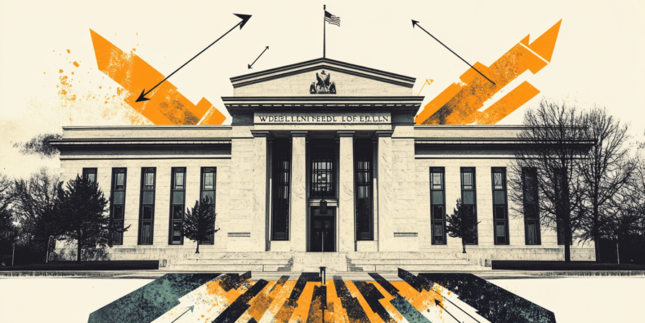The piercing pattern
Some candlestick price patterns are well known, like shooting stars, hammer reversal bars, and engulfing bars. However, some of the less well-known candlestick price patterns are worth noting when reading price charts. This is particularly helpful when you are managing a position on the longer-term charts. First, let’s look at the piercing pattern with an example of how this looks from Apple’s price charts.
The piercing pattern described
The piercing pattern is a candlestick pattern used in trading to show that a downtrend might be ending and the price could start going up. It has two candlesticks. It is particularly useful when assessing whether a downtrend is about to come to an end. The pattern is subtle and easily overlooked, so this is what to specifically look for. Note the gap that is needed for the second candlestick pattern.
-
Candlestick 1: The first candlestick in the pattern is a bearish candlestick, indicating selling pressure. It represents a continuation of the existing downtrend and opens near or above the previous candlestick’s close.
-
Candlestick 2: The second candlestick is a bullish candlestick, which opens lower than the previous candlestick’s close. Note: There is a price gap between the close of the first candlestick and the open of the second candlestick. Intraday, it would look like the bears are taking prices to even lower lows. However, the tide changes with the second candlestick.
-
Close of candlestick 2: The crucial aspect of the piercing pattern comes with the second candlestick, as it must close at least halfway into the real body of the first candlestick. In other words, the second candlestick’s closing price is significantly higher than the first candlestick’s midpoint.
The piercing pattern on the charts
Take a look here for a market example of what candlestick 1 and candlestick 2 from the Apple Weekly chart should look like.
Our products and commentary provides general advice that do not take into account your personal objectives, financial situation or needs. The content of this website must not be construed as personal advice.
Editors’ Picks

EUR/USD clings to small gains near 1.1750
Following a short-lasting correction in the early European session, EUR/USD regains its traction and clings to moderate gains at around 1.1750 on Monday. Nevertheless, the pair's volatility remains low, with investors awaiting this weeks key data releases from the US and the ECB policy announcements.

GBP/USD edges higher toward 1.3400 ahead of US data and BoE
GBP/USD reverses its direction and advances toward 1.3400 following a drop to the 1.3350 area earlier in the day. The US Dollar struggles to gather recovery momentum as markets await Tuesday's Nonfarm Payrolls data, while the Pound Sterling holds steady ahead of the BoE policy announcements later in the week.

Gold stuck around $4,300 as markets turn cautious
Gold loses its bullish momentum and retreats below $4,350 after testing this level earlier on Monday. XAU/USD, however, stays in positive territory as the US Dollar remains on the back foot on growing expectations for a dovish Fed policy outlook next year.

Solana consolidates as spot ETF inflows near $1 billion signal institutional dip-buying
Solana price hovers above $131 at the time of writing on Monday, nearing the upper boundary of a falling wedge pattern, awaiting a decisive breakout. On the institutional side, demand for spot Solana Exchange-Traded Funds remained firm, pushing total assets under management to nearly $1 billion since launch.

Big week ends with big doubts
The S&P 500 continued to push higher yesterday as the US 2-year yield wavered around the 3.50% mark following a Federal Reserve (Fed) rate cut earlier this week that was ultimately perceived as not that hawkish after all. The cut is especially boosting the non-tech pockets of the market.
RECOMMENDED LESSONS
Making money in forex is easy if you know how the bankers trade!
I’m often mystified in my educational forex articles why so many traders struggle to make consistent money out of forex trading. The answer has more to do with what they don’t know than what they do know. After working in investment banks for 20 years many of which were as a Chief trader its second knowledge how to extract cash out of the market.
5 Forex News Events You Need To Know
In the fast moving world of currency markets where huge moves can seemingly come from nowhere, it is extremely important for new traders to learn about the various economic indicators and forex news events and releases that shape the markets. Indeed, quickly getting a handle on which data to look out for, what it means, and how to trade it can see new traders quickly become far more profitable and sets up the road to long term success.
Top 10 Chart Patterns Every Trader Should Know
Chart patterns are one of the most effective trading tools for a trader. They are pure price-action, and form on the basis of underlying buying and selling pressure. Chart patterns have a proven track-record, and traders use them to identify continuation or reversal signals, to open positions and identify price targets.
7 Ways to Avoid Forex Scams
The forex industry is recently seeing more and more scams. Here are 7 ways to avoid losing your money in such scams: Forex scams are becoming frequent. Michael Greenberg reports on luxurious expenses, including a submarine bought from the money taken from forex traders. Here’s another report of a forex fraud. So, how can we avoid falling in such forex scams?
What Are the 10 Fatal Mistakes Traders Make
Trading is exciting. Trading is hard. Trading is extremely hard. Some say that it takes more than 10,000 hours to master. Others believe that trading is the way to quick riches. They might be both wrong. What is important to know that no matter how experienced you are, mistakes will be part of the trading process.
The challenge: Timing the market and trader psychology
Successful trading often comes down to timing – entering and exiting trades at the right moments. Yet timing the market is notoriously difficult, largely because human psychology can derail even the best plans. Two powerful emotions in particular – fear and greed – tend to drive trading decisions off course.

